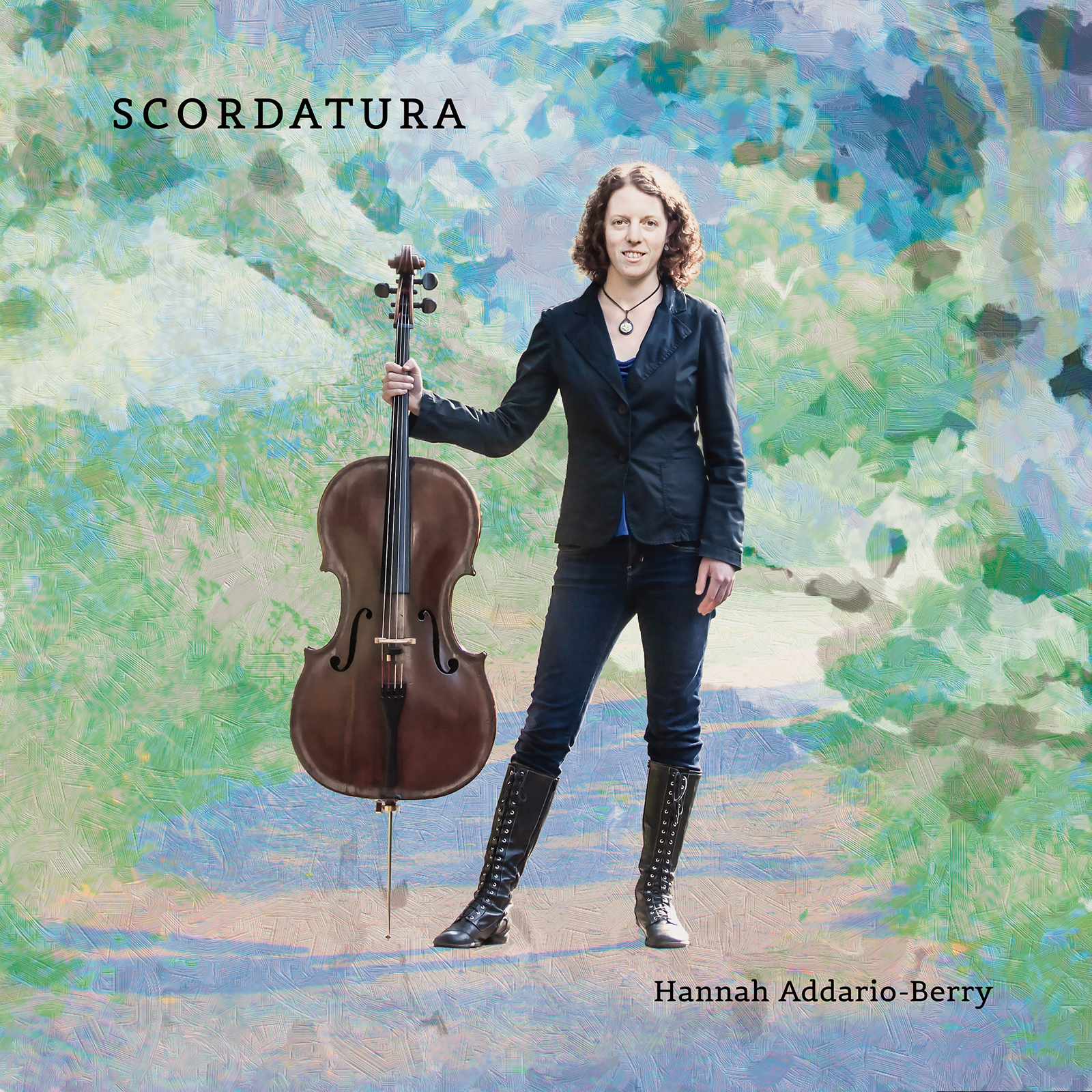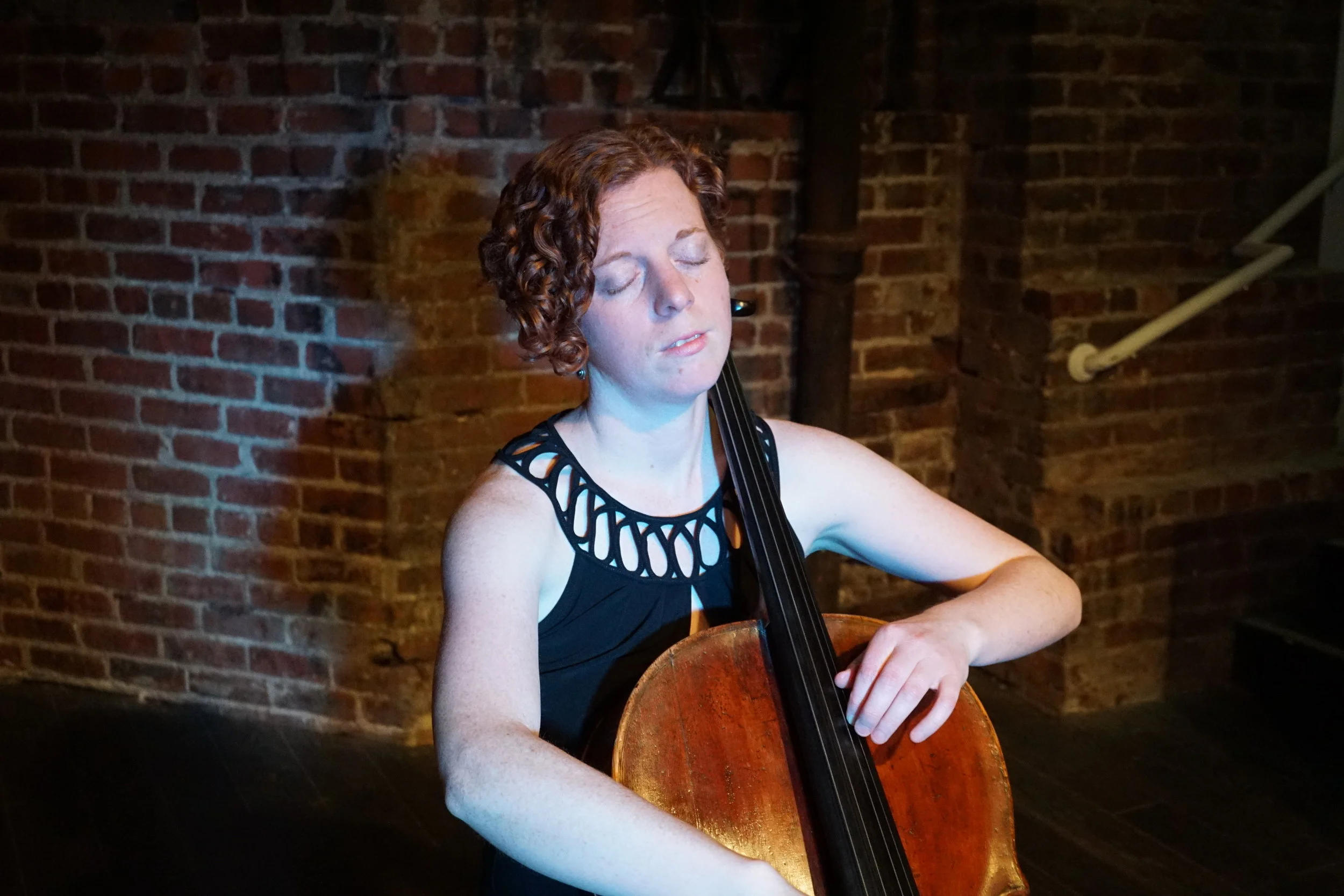Another thoughtful review for Hannah Addario-Berry's Scordatura!
This article originally appeared in Issue 40:2 (Nov/Dec 2016) of Fanfare Magazine.
SCORDATURA • Hannah Addario-Berry (vc) • AEROCADE 004 (77:09)
KODÁLY Sonata for Solo Cello, op. 8. B. MILLER Miniatures, Book 3: Koans. A. ROSE Lands End. E. CLARK Ekpyrotic: Layerings IV. JUSTEN Sonaquifer. COONS Myth’s Daughter. LIU Calor
This disc marks the first chapter of an ongoing project that couples Kodály’s 1915 Sonata for Solo Cello with contemporary works. The six other works here are all directly inspired by Kodály’s masterpiece and were all written for the present cellist.
San Francisco Bay Area-based Canadian cellist Hannah Addario-Berry is clearly an adventuresome spirit, and this is a most enlightened way to hear an established masterpiece in a new light. The title of the disc, Scordatura, refers to the practice of deliberately altering the tuning on a stringed instrument (as Kodály does here). The cello in this piece has the two lower strings lowered by a half-step, which in itself offers a whole shedload of new harmonics to the instrument. Addario-Berry’s idea is to create a repertoire of music for scordatura cello.
The Kodály comes up against quite come competition, including Queyras on Harmonia Mundi (Fanfare 26:1) and the fine, ever-impassioned Alban Gerhardt on Oehms Classics (the latter a sensible coupling with a Bach unaccompanied Cello Suite and one by Britten.) Yet Addario-Berry holds her own in this huge, nearly 40-minute piece, her plangent tone in the first movement highly effective. Her tuning, too, is impeccable, even in those testing, ultra-high passages. But it is in the desperate loneliness of the Adagio (con gran espressione) that Addario-Berry triumphs; the spread pizzicatos over a pedal bass carry huge emotional weight. The finale has huge energy, and there is a feeling of manic dance over some of the higher-pitched sections.
All of the remaining pieces on the disc are World Premieres. It is the scoring of Brent Miller’s 2015 piece “Koans” from Miniatures, Book 3 that intrigues and entices: it is for cello, voice and dice. Unfortunately, the role of the dice is not explored in the booklet note, but we do hear them being thrown at one point so one assumes they determine something about the performance; but we do get to hear some text from The Gateless Gate, a collection of koans compiled by the 13th century Chinese Zen master Wumen Huikai. Addario-Berry’s voice is deliberately slightly recessed at the opening, but turn her up at your peril, as the entrance of the cello is mightily close. Miller’s writing is terrifically expressive, with some gorgeous glissando harmonics; but there are some grating dissonances there, too.
For Lands End (2015), composer Alisa Rose took the topography of a section of the trail from San Francisco’s Lands End Trail that leaves from the city and crosses cliffs, descending down to a rocky beach. The technique is therefore presumably analogous to that used by Villa-Lobos on mountain contours to develop material for his music (try that composer’s Symphony No. 6, “On the Outline of Mountains in Brazil.”) The use of old fiddle bowing techniques by Rose is aurally obvious and works well in highlighting the resonant feel of the tuning used; the rhythms provide the impression of optimistic forward movement.
Eric Kenneth Malcom Clark has composed a series of pieces under the umbrella title of Layerings, each of which asks the soloist to record material several times (including singing), with the inevitable small differences resulting in overlappings. The composer also asks for miniature clothes pins on the strings in this piece, Ekpyrotic (2015); the result is something like a gamelan. Interestingly, the piece Sonaquifer by Gloria Justen of 2015 calls forth memories of the composer of earlier music, including Bach, Bartók and, topically, Kodály. The playful nature of the musical lines is perfectly caught by Addario-Berry, and the piece flows magnificently with a sort of artless grace (the composer actually refers to it as a “flowing, turning dance”.) It would be a perfect encore.
Scored for “cello and projected video,” Myth’s Daughter (2015) by Lisa Renée Coons has Addario-Berry reading fragments from Grimm Fairy Tales. Both www.lisacoons.com and YouTube will furnish the video, which concentrates on the innocence of a child. In performance terms, this is a tour de force, always entertaining; Addario-Berry’s rich, expressive tone tells its own story in conjunction with the text. Finally, Jerry Liu’s Calor (2015), an adventuresome piece that examines the concept of heat (“calor” is Latin for heat) in terms of flickering flames, smoulderings and “fiery momentum.” The score includes some measures without meter to give some level of freedom to the performer. The close recording only emphasizes the (pardon the incoming pun) scorching intensity of of the performance.
The disc can be further explored (and purchased) at https://hannahab.bandcamp.com. There also is a fascinating recorded interview with Addario-Berry around this disc at http://www.soundnotion.tv/2016/05/soundnotion-233/. A very varied recital. Well worth investigating. Colin Clarke





















